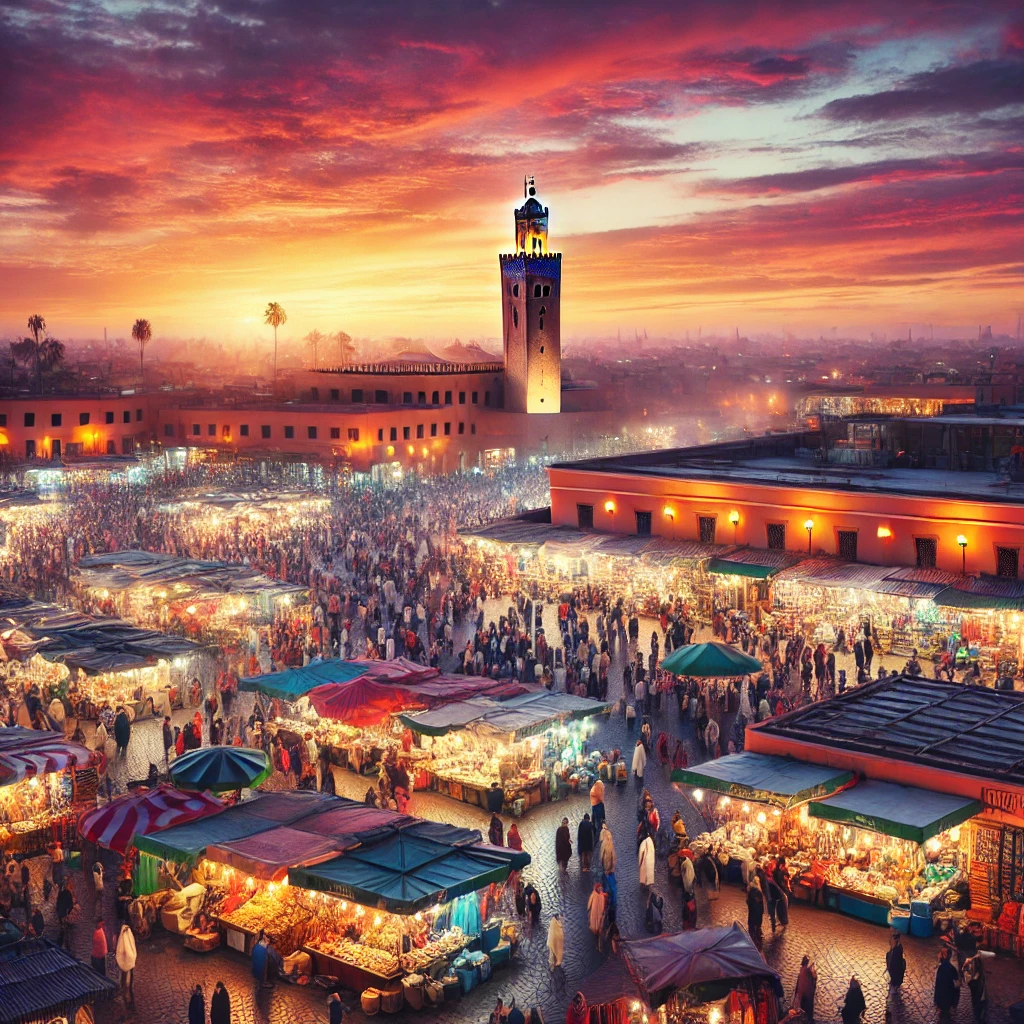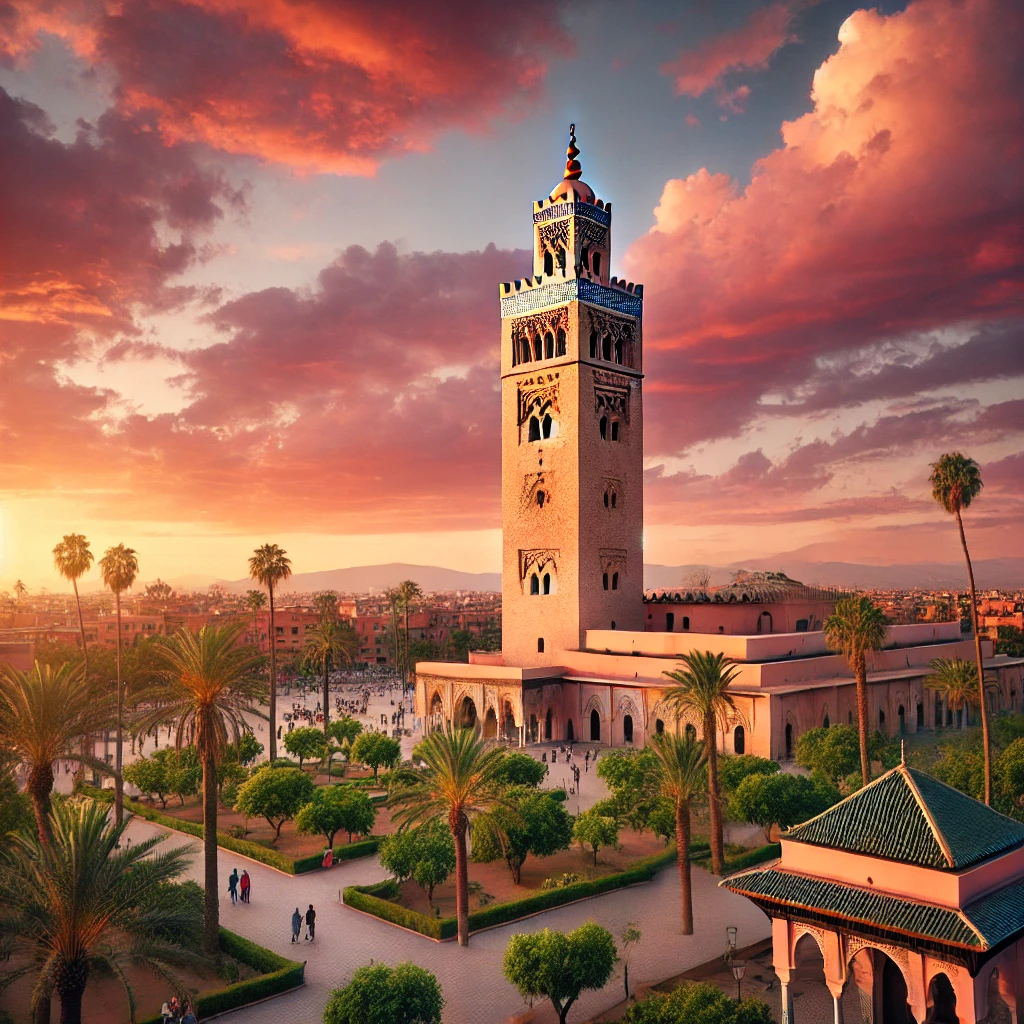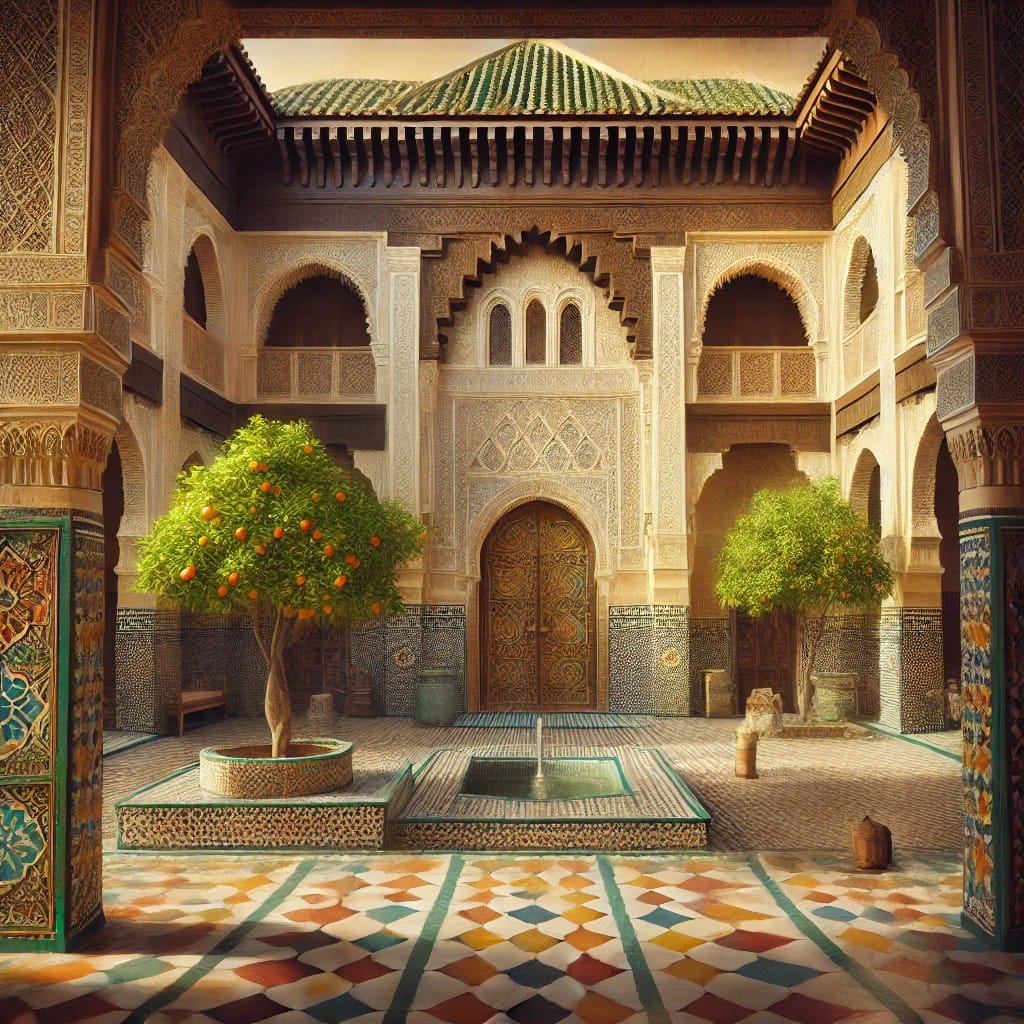Nestled in the vibrant heart of Marrakech, Morocco, stands a symbol of grandeur and royal ambition: El Badi Palace. Once a jewel of the Saadian dynasty, this magnificent palace was built in the late 16th century by Sultan Ahmed al-Mansour, celebrating his victory over the Portuguese at the Battle of the Three Kings. Today, El Badi Palace is one of Marrakech’s most iconic landmarks, drawing visitors from around the world to marvel at its remnants of former glory. If you’re planning a trip to Marrakech, visiting El Badi Palace is a must to understand Morocco’s rich history and cultural heritage.
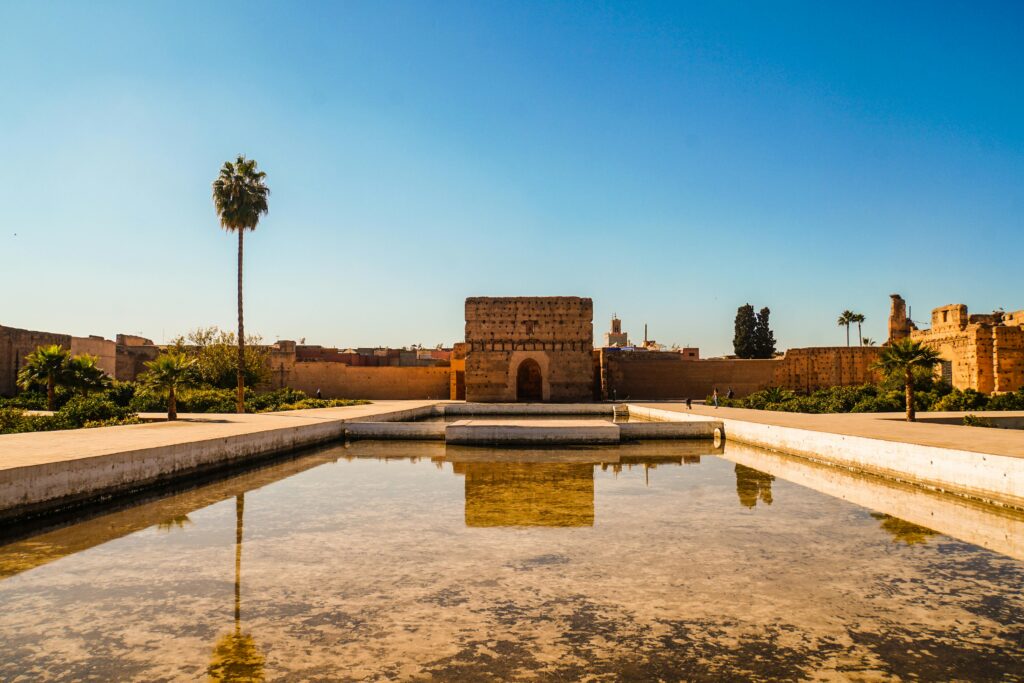
History of El Badi Palace
El Badi Palace, which translates to “The Incomparable,” was constructed in 1578. Sultan Ahmed al-Mansour spared no expense, commissioning the best craftsmen to create a palace that would reflect his power and wealth. Built using the finest materials like Italian marble, Indian onyx, and gilded elements, the palace was a masterpiece of Islamic art and architecture. The complex once featured more than 350 rooms, lavish gardens, intricate fountains, and vast courtyards, all designed to awe visitors and dignitaries alike.
Sadly, El Badi Palace’s splendor was short-lived. In the 17th century, the Alaouite Sultan Moulay Ismail ordered much of the palace to be dismantled, and its materials were repurposed to construct his imperial capital in Meknes. What remains today are the vast ruins that echo a glorious past.
Architectural Highlights
Though much of El Badi Palace has been stripped of its grandeur, its scale and design are still breathtaking. Visitors can explore the expansive courtyards, the Koutoubia minaret-inspired towers, and the underground prison cells that once held foreign prisoners.
- The Central Courtyard: At the heart of the palace lies a massive courtyard featuring a large pool and smaller fountains. The pool was once surrounded by orange trees and lined with marble. This area gives visitors a sense of the vastness and opulence that once defined El Badi.
- Saadian Pavilion: Located on the northern side of the courtyard, the Saadian Pavilion is one of the few structures that remains partially intact. The intricate woodwork and tile mosaics that decorate this pavilion offer a glimpse of the craftsmanship that made El Badi a marvel.
- Terrace Views: A climb to the palace’s terrace provides stunning panoramic views of Marrakech. From here, you can see the Atlas Mountains, the Koutoubia Mosque, and the bustling streets of the medina.
Why You Should Visit El Badi Palace
El Badi Palace offers more than just a walk through historical ruins; it’s an immersive experience that takes you back to a time of Moroccan splendor. Here are a few reasons why you should include El Badi Palace in your Marrakech itinerary:
- Historical Significance: El Badi Palace is an essential piece of Morocco’s rich history. It stands as a testament to the wealth and power of the Saadian dynasty and provides invaluable insights into the country’s past.
- Architectural Beauty: Despite its ruined state, the palace’s architecture remains awe-inspiring. Visitors can admire the scale of the structure and imagine the luxurious décor that once filled the space.
- Cultural Immersion: Walking through the ruins of El Badi Palace allows you to immerse yourself in Moroccan culture, from its Islamic art to its royal history. Plus, the palace often hosts art exhibitions and cultural events that enhance the visitor experience.
- Photography Opportunities: With its blend of historical charm and scenic views, El Badi Palace offers countless photo opportunities. Whether it’s the ruins set against a brilliant blue sky or the panoramic views from the terrace, this site is a photographer’s paradise.
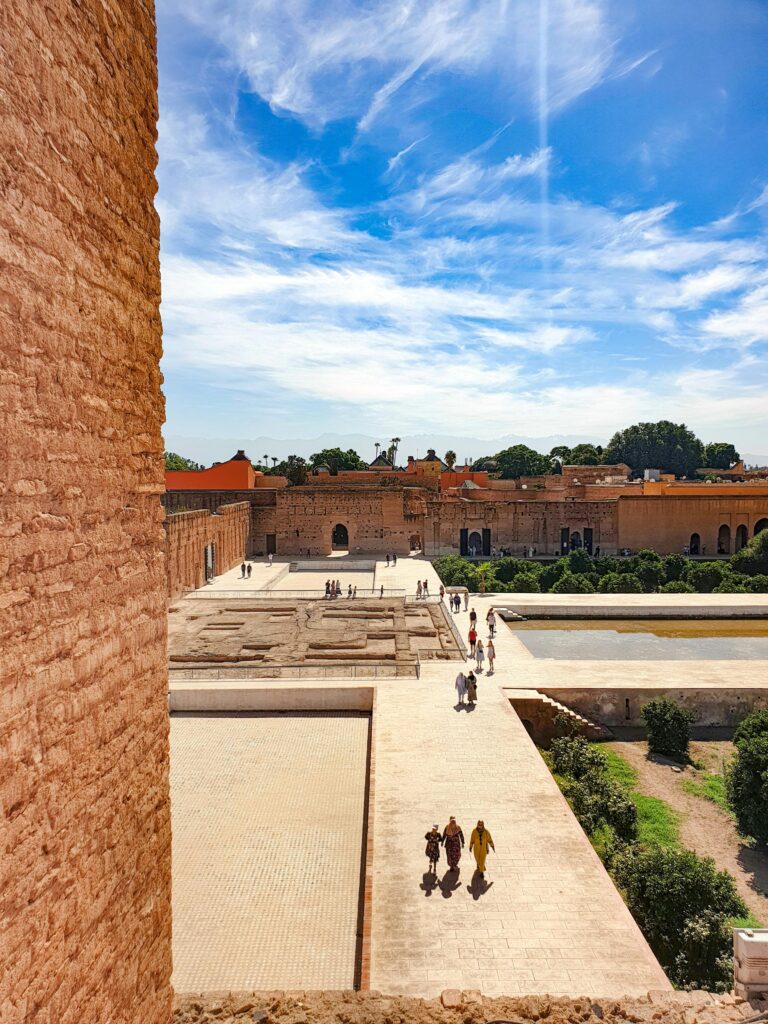
Tips for Visiting El Badi Palace
- Opening Hours: El Badi Palace is open daily from 9:00 AM to 5:00 PM. Arrive early to avoid the afternoon heat and crowds, especially during the peak tourist season.
- Tickets: Entrance to the palace costs around 70 MAD (Moroccan Dirhams). Be sure to bring local currency, as credit cards are not always accepted.
- Best Time to Visit: The best time to explore El Badi Palace is during the cooler months, from October to April. Morning visits are ideal to capture the golden light for photography, and the terrace views are particularly spectacular at sunrise.
- Nearby Attractions: After visiting El Badi Palace, consider exploring other nearby historical sites such as the Saadian Tombs or Bahia Palace, both of which offer more insights into Morocco’s rich heritage.
How to Get to El Badi Palace
El Badi Palace is located in the southern part of Marrakech’s medina, not far from the famous Jemaa el-Fnaa square. The palace is easily accessible on foot if you’re staying in or near the medina. Alternatively, you can take a taxi or hop on a local bus.
- Address: Ksibat Nhass, Medina, Marrakech, Morocco.
- GPS Coordinates: 31.6187° N, 7.9865° W.
Conclusion
A visit to El Badi Palace is an unmissable experience for anyone traveling to Marrakech. Whether you’re a history enthusiast, architecture lover, or simply looking to explore one of the city’s most fascinating landmarks, El Badi offers a journey through time that is both educational and awe-inspiring. As you wander through its vast courtyards and terraces, you’ll get a sense of the grandeur that once defined this palace and its importance in Morocco’s royal history.
If you’re planning a trip to Marrakech, make sure El Badi Palace is at the top of your must-visit list. Don’t miss the opportunity to experience one of the most remarkable remnants of Morocco’s glorious past.
